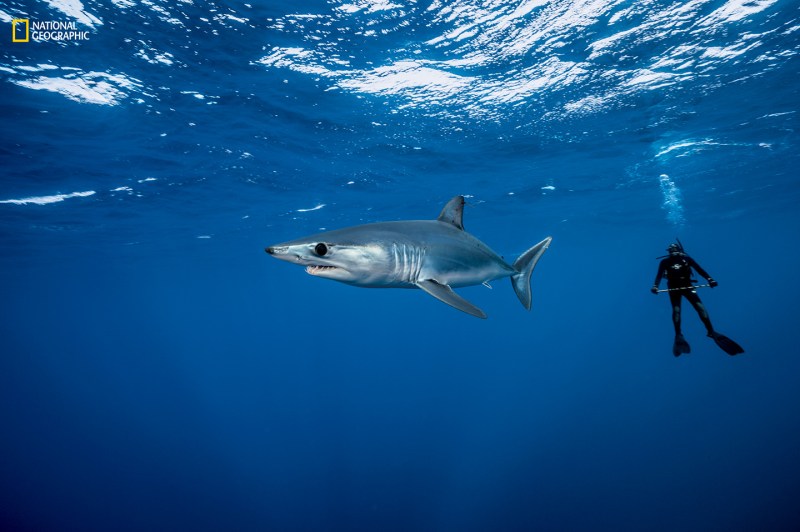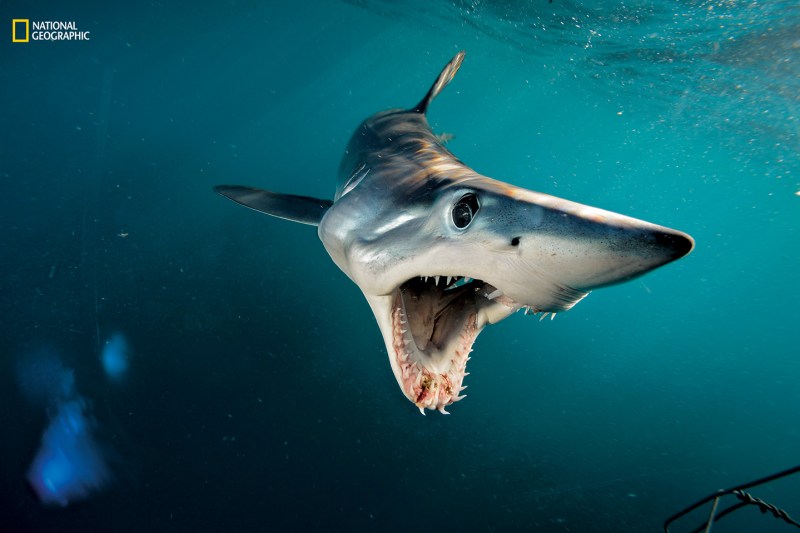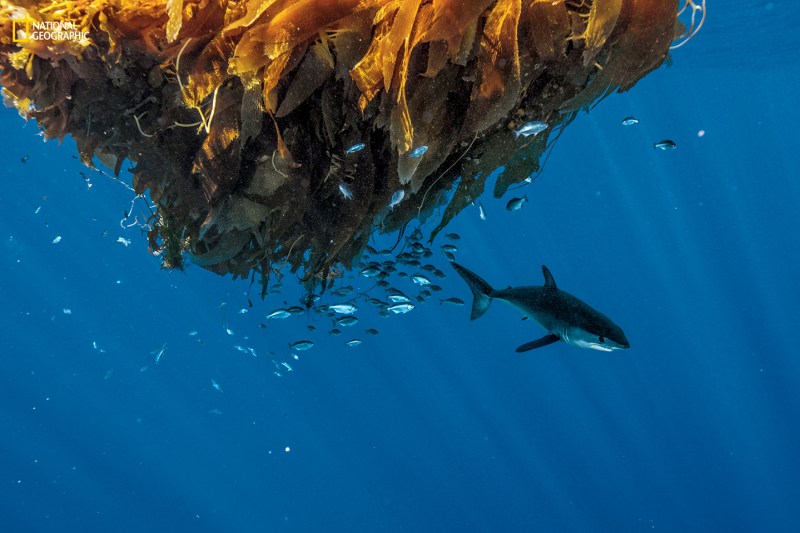Shortfin makos, the ocean’s fastest sharks, have a storied reputation among fisherman. The sharks can swim up to 35 mph and are tenacious fighters, with a head like a bullet and muscular bodies. Their meat rivals swordfish in quality and their fins are popular in Asia for shark-fin soup.
This combination has made the sharks a valuable commodity, however, and a century of fishing seems to have taken its toll. Scientists have no clear idea how many makos there are left in the Earth’s oceans, and most of the data comes from commercial fishing operations, who historically have underreported the size of their catches.

For the August issue of National Geographic magazine, journalist Glenn Hodges and photographer Brian Skerry tagged along with scientists trying to fill in the gaps of knowledge about makos.
The sharks got their mythical reputation back in 1926. Zane Grey, author of Tales of the Angler’s Eldorado, New Zealand, caught a mako that weighed 258 pounds. He later wrote that he had never seen anything like it, “every line of this mako showed speed and power.” But it was the 1,200-pounder that the captain of Grey’s boat battled that led to the almost mythical reputation among fishermen.
According to the National Marine Fisheries Service, which regulates fishing in U.S. waters, makos are being fished at a sustainable level. But this is an imprecise measure. Brad Wetherbee, a marine ecologist from the University of Rhode Island, and his team have tagged 49 makos. Twelve have been killed.
Nat Geo’s Hodges accompanied scientists affiliated with the Guy Harvey Research Institute, which has been tagging and tracking makos in the Atlantic and Gulf of Mexico since 2008. Their goal is to study the sharks’ migratory patterns. Makos in the western North Atlantic Ocean travel northward during the warmer months and then back south as the winter approaches.

Hodges writes that after Jaws hit theaters in 1975, shark-fishing tournaments popped up along the eastern seaboard. So after he rode along with the Guy Harvey Research Institute team, he went to the Maryland shore for Mako Mania, an annual shark-fishing tournament held at the Bahia Marina in Ocean City.
One of the fisherman told Hodges that a 500-pound thresher shark was caught, and she was pregnant. The tournament staff tried to hide the pups from the crowd after the shark was gutted. Hodges writes that threshers, like makos, are considered “vulnerable” by the International Union for Conservation of Nature. Killing is technically legal, but it “it makes for bad publicity.”

The Fisheries Service attributes most of the mako deaths in the U.S. to recreational fishermen. While it’s too soon to say who is fishing too much and where, Charlie Donilon, a Rhode Island captain who has run shark-fishing charters since 1976, told Hodges he doesn’t need to wait for data.
“I did my share of killing,” he told Hodges. “You’ve got to give back. We just take, take all the time …”
This article was featured in the InsideHook newsletter. Sign up now.






















